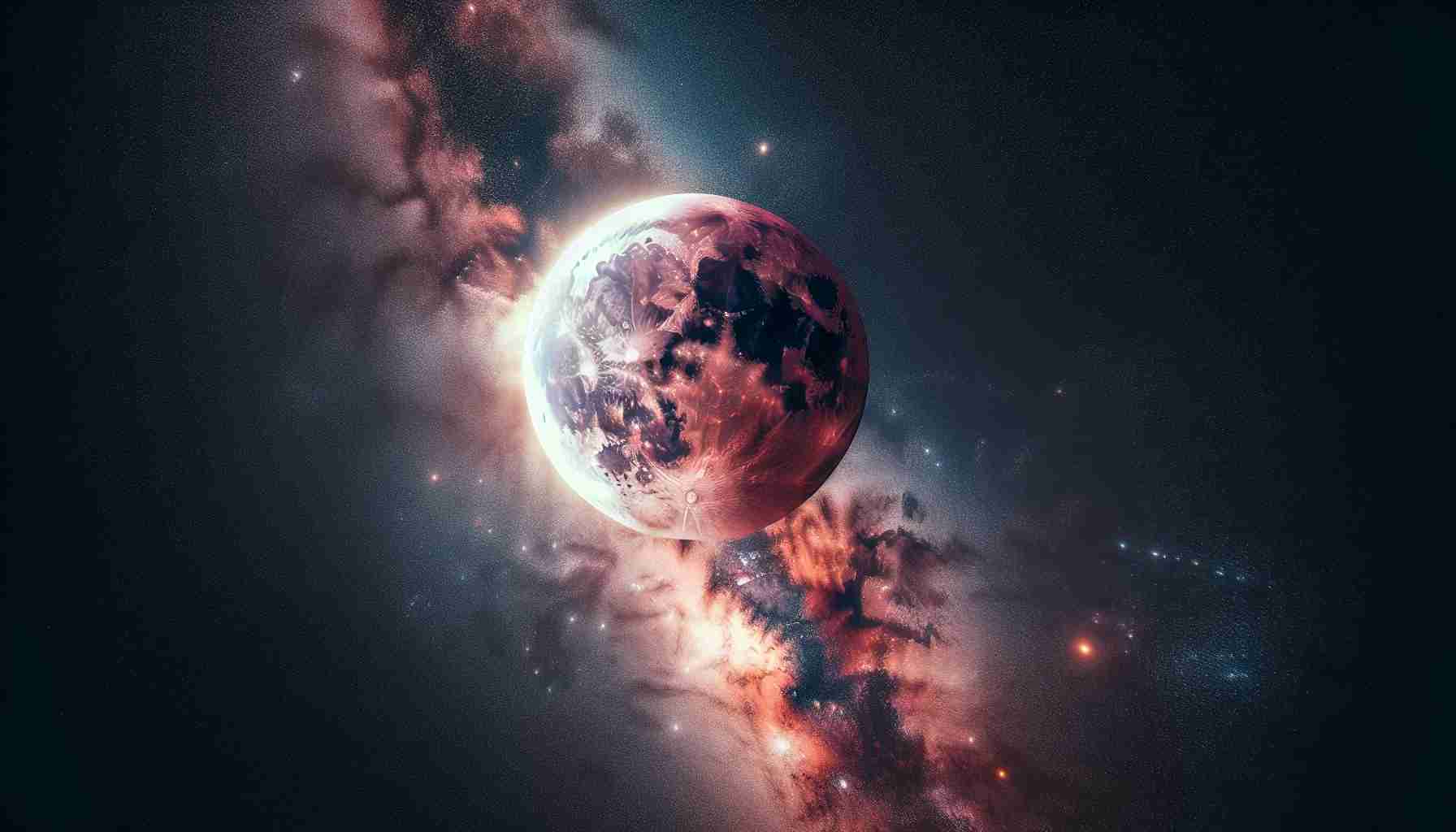
A remarkable celestial event unfolded during the early hours of Tuesday, as a partial lunar eclipse coincided with a supermoon, captivating viewers across the UK and beyond. A supermoon occurs when the moon reaches its nearest point to Earth, resulting in a stunning visual display that appears significantly larger and brighter—about 30% brighter and 14% larger, as noted by meteorological experts.
The partial lunar eclipse, which saw the Earth’s shadow partially obscure the moon, was visible from 1:41 AM to 5:47 AM UK time. Prior to the event, meteorologists estimated that approximately 4% of the moon would be obscured. Although such occurrences are infrequent, the next similar event is anticipated in 2026 and promises to be even more impressive, with almost all of the moon—96%—expected to be cloaked in shadow.
Images taken during the peak of the eclipse around 3:45 AM showcased the moon partially enveloped in shadow, providing a stunning sight for enthusiasts and photographers alike.
This extraordinary lunar phenomenon was not confined to the UK. Observers in the United States, South America, Europe, Africa, and parts of Asia and the Middle East were treated to the celestial show. The supermoon was notable for being a harvest moon, recognized for its proximity to the autumn equinox and its significance during harvesting season.
Partial Lunar Eclipse Dazzles Skywatchers Worldwide
A spectacular celestial display graced the night skies as a partial lunar eclipse coincided with a supermoon, attracting the attention of millions of skywatchers globally. While earlier reports highlighted the eclipse’s visibility across various continents, there are several intriguing facts and aspects about this event that warrant further exploration.
Understanding the Science Behind the Eclipse
The rarity of the partial lunar eclipse is underscored by the specific alignment of Earth, the moon, and the sun. During a partial lunar eclipse, only a portion of the moon enters Earth’s umbra, or full shadow. In contrast, during a total lunar eclipse, the entire moon is enveloped in shadow. This partial eclipse revealed approximately 4% of the moon’s surface obscured, which, while not as dramatic as a total eclipse, still offered an extraordinary sight.
Key Questions and Their Answers:
1. What defines a supermoon?
– A supermoon occurs when the moon is at its perigee, the point in its orbit closest to Earth. This results in an apparent increase in size and brightness.
2. How often do partial lunar eclipses occur?
– Partial lunar eclipses happen approximately every 2.5 years on average, though the specific visibility varies based on one’s geographic location.
3. What will make the next similar event in 2026 special?
– The next eclipse in 2026 is expected to be notable because 96% of the moon will be obscured, which will provide a more dramatic visual experience for observers.
Challenges and Controversies:
While lunar eclipses are largely regarded as beautiful astronomical phenomena, they sometimes spark debates within the scientific community regarding their educational value compared to solar eclipses. For instance, solar eclipses can create feelings of awe and urgency due to their brief duration and dramatic darkness, prompting questions on whether the increase in interest and engagement in astronomy is better captured through solar events rather than lunar ones.
Additionally, urban light pollution poses significant challenges for observers aiming to capture the best views of such events. Cities with high levels of artificial light significantly diminish the visibility of celestial objects, which can lead to frustrations among astronomy enthusiasts.
Advantages and Disadvantages of Lunar Eclipses:
Advantages:
– Accessibility: Unlike solar eclipses, lunar eclipses are safe to observe with the naked eye without protective eyewear.
– Visibility: They can be seen from anywhere on the night side of Earth, making them accessible to a larger audience.
Disadvantages:
– Weather Dependency: Cloud cover can obstruct visibility, leaving many would-be viewers disappointed.
– Less Dramatic Impact: Compared to solar eclipses, partial lunar eclipses may not evoke the same level of excitement or urgency among the public.
Conclusion
As enthusiasts around the world took to their telescopes and cameras during this partial lunar eclipse, the blend of a supermoon and a lunar phenomenon offers a captivating experience that enriches public interest in astronomy. In a time where scientific literacy is crucial, events like this not only encourage engagement with the cosmos but also foster appreciation for the natural wonders surrounding us. For more information on lunar events and viewing tips, visit NASA and Sky & Telescope.
https://youtube.com/watch?v=MIP9QpO8QjE



